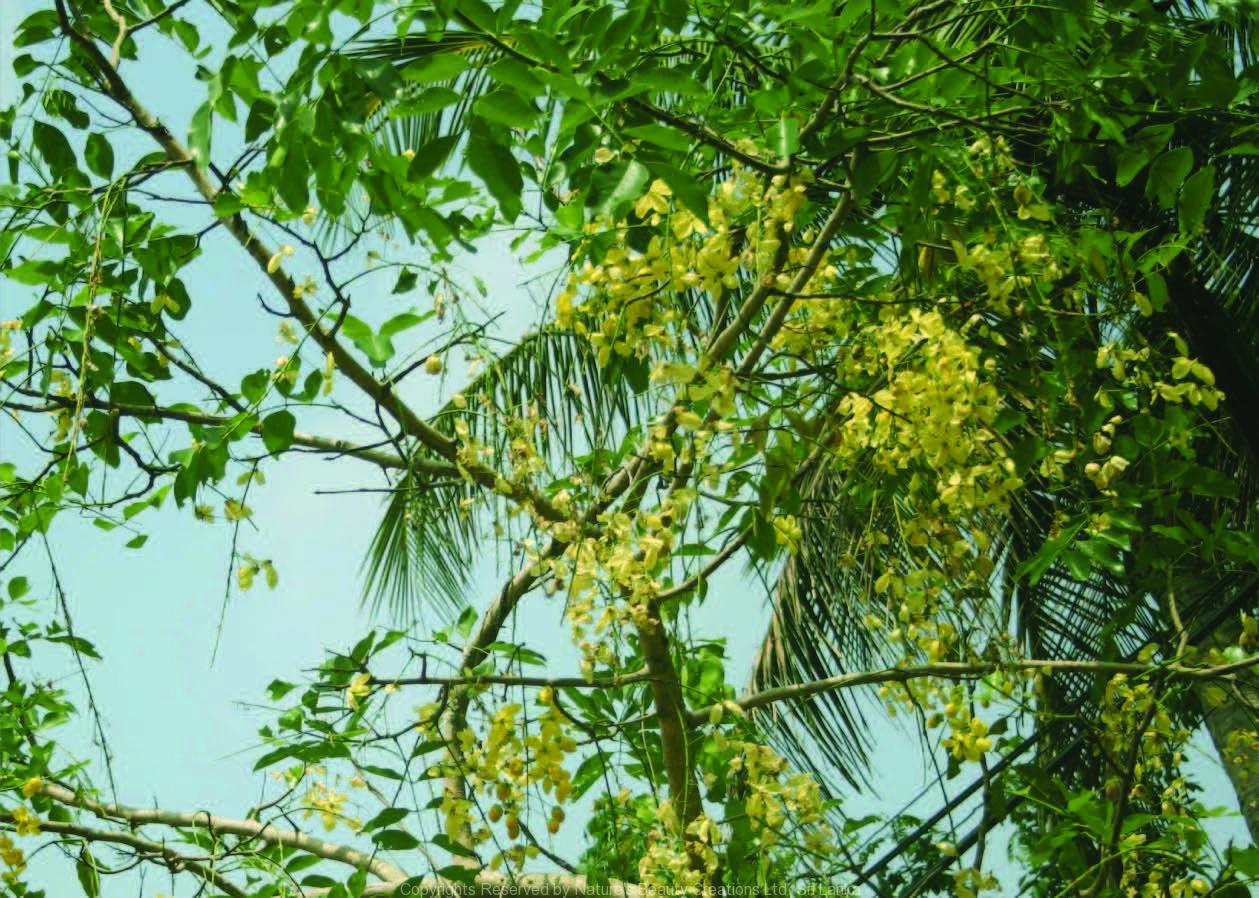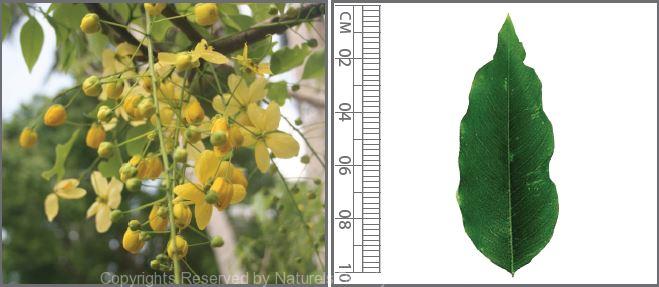

Traditional Knowledge
Useful plant parts :
Leaf, fruit and flower
Uses in traditional medicine :
- Porridge prepared by young leaves is taken to treat constipation
- Mature leaves ground with lime juice are applied on the skin to treat ringworm diseases, eczema and skin problems
- Mature fruit pulp with cow’s milk is taken as a laxative and in large doses as a purgative
- Decoction of the flowers is used to treat rat bite poisoning
Scientific Research
Chemical constituents:
Fistucacidin from heartwood; quinone: fistulic acid, leucoanthocyanin: leucopelargonidin tetramer from flowers; glycerides and fatty acids: linoleic, oleic, stearic, palmitic acids from seeds; benzofuran: moracin J, lactone: esculetin, flavonoids: kaempferol, naringenin, sterols: β-sitosterol, β-daucosterol, fucosterol, stigmasterol, ergosterol, terpenes: betulinic acid, lupeol, α-amyrin, friedelin from plant oil and leaves
Bioactivity :
Methanol extract of bark: anti-inflammatory, antioxidative; seeds: antitumor; n-heptane and chloroform extracts of leaves: hepatoprotective, antiplasmodial; organic extracts from the flower: antibacterial, antifungal; plant oil: antifungal
Clinical:
An ingredient of the tablet, “Purim” used to treat acne; An ingredient of the tablet “Pilex” for early cases of haemorrhoids
References : Bahorun, T. et al., (2005), Phytochemical constituents of Cassia fistula, African Journal of Biotechnology, 4(13), 1530-1540. Duraipandiyan, V. and Ignacimuthu, S., (2007), Antibacterial and antifungal activity of Cassia fistula L.: an ethnomedicinal plant, J Ethnopharmacol, 112(3), 590-4. Gopal, M. G. et al., (2001), Effectiveness of Herbal Medications in the Treatment of Acne vulgaris – A Pilot Study, The Indian Practitioner, 54(10), 723. Grace, M. H. et al., (2012), Antiplasmodial activity of the ethnobotanical plant Cassia fistula, Nat Prod Commun, 7(10), 1263-6. Gupta, M. L. and Handa, S., (1976), Role of Pilex Tablets and Ointment in Patients of Haemorrhoids, Probe, 3, 193-194. Gupta, M. et al., (2000), Antitumor activity of methanolic extract of Cassia fistula L. seed against Ehrlich ascites carcinoma, Journal of Ethnopharmacology, 72(1-2), 151-156. Ilavarasan, R. et al., (2005), Anti-inflammatory and antioxidant activities of Cassia fistula linn bark extracts, African Journal of Traditional Complementary and Alternative Medicines, 2(1), 70-8. Irshad, M. et al., Composition of Cassia fistula oil and its antifungal activity by disrupting ergosterol biosynthesis, Nat Prod Commun, 8(2), 261-4. Pradeep, K., (2007), Effect of Cassia fistula Linn. leaf extract on diethylni- trosamine induced hepatic injury in rats, Chemico-Biological Interac- tions, 167(1), 12-18. Wang, L. Q. et al., (2013), A new natural naphtho[1,2-b]furan from the leaves of Cassia fistula, J Asian Nat Prod Res.
Copyrights Reserved By
Natures Beauty Creations



